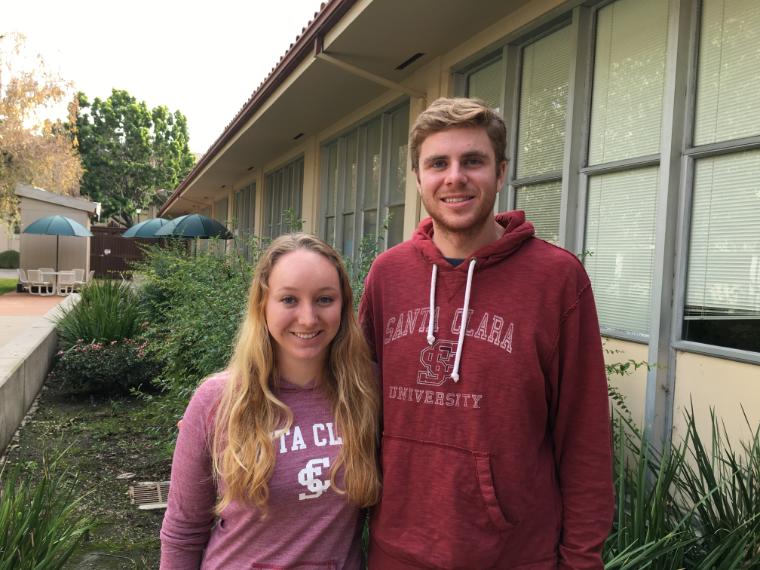
When Crazy Happens, Making It Work
As a young girl, Anna Harris ’17 wanted to be an architect. Then she asked for Legos one Christmas and a civil engineer was born. “I realized I was more interested in knowing how buildings stayed up as opposed to design and aesthetics,” she recalled. Jack Dinkelspiel ’17 can relate. “I always liked building. I was always putting things together and taking them apart. My grandfather was a civil engineer, and I grew up hearing about things he designed and built.”
So it’s no surprise that these two structural engineering students found themselves as teammates working on SCU’s winning entry in California’s first-ever Tiny House competition. “I’d always really liked hands-on projects and learned the most having that kind of experience—not just technically, but also about how to be a team player,” said Harris. For Dinkelspiel, the chance to work on a project outside the classroom was a draw. “A lot of extracurriculars are not engineering related. I wanted to apply what I was learning in class to something in the real world,” he said.
As is often the case with big, long-term projects such as this one, teammates came and went, and Anna found herself the civil team lead. Later, Jack became co-lead. “I did the management side, talking with electrical and mechanical leads, and Jack did research, calculations, and behind-the-scenes stuff. We both learned Revit, the 3D modeling software,” she said.
After debating the benefits of using SIPs (structural insulated panels), the entire team visited the factory where theirs were made. And although the trailer-borne entries only had to follow recreational vehicle standards, the rEvolve students sought to meet California Building Codes. “We put seismic ties on our SIPs to make it as structurally sound as possible,” said Harris.
Throughout design and construction, roadblocks, hurdles, and delays became the norm. The team learned to manage change, frustration, disappointment, and anxiety with a calm befitting a neurosurgeon. Their biggest issue was when Hanjin Shipping declared bankruptcy, leaving SCU’s solar tracking system stranded on a dock in Spain, seriously jeopardizing the team’s potential score. (It arrived in time and they ended up winning the energy contest!) Other maddening problems arose too, Dinkelspiel recalled. It turned out the trailer on which the home was built was not exactly square. “Also, the whole deck had to be redesigned a week before the competition,” he said, demanding more problem solving on the fly. “Constructability changed compared to the way the plans were modeled.”
“We’ll Figure It Out”
A day before judging was to begin, Harris calmly made more than 100 phone calls to building suppliers and home improvement stores before finding deck fascia in the color the team needed to present a polished product for the judges and viewing public. “A project like this helps you put things in perspective,” she said. “If we don’t get the fascia, we’ll figure something out; we always do. Crazy things happen, you just have to make it work.”
Summing up his two years, Dinkelspiel said, “We had to research a lot of things we hadn’t taken classes for. Ninety percent of the things we didn’t have in classes. There was a lot of trial and error, learning things outside our major—plumbing, electrical, mechanical—things we’re not normally exposed to. When I first joined the team I felt I didn’t have enough knowledge to be useful, but I’ve learned so much. I feel much more self-sufficient now.”
“We were all so different on this team,” Harris added. “Different personalities, different majors—it’s pretty surprising how well we got along. But all of us were passionate about building a great house for Operation Freedom Paws. Yes, we were trying to win, but that was not the only motivator. We’re so lucky SCU lets us do these projects and that Dean Mungal is especially supportive of providing students with hands-on experiences. We’re lucky to have our crazy ideas—we made the whole house rotate!—taken seriously and supported.”
Anna Harris and Jack Dinkelspiel show their school spirit in their clothing and their actions. Photo: Heidi Williams